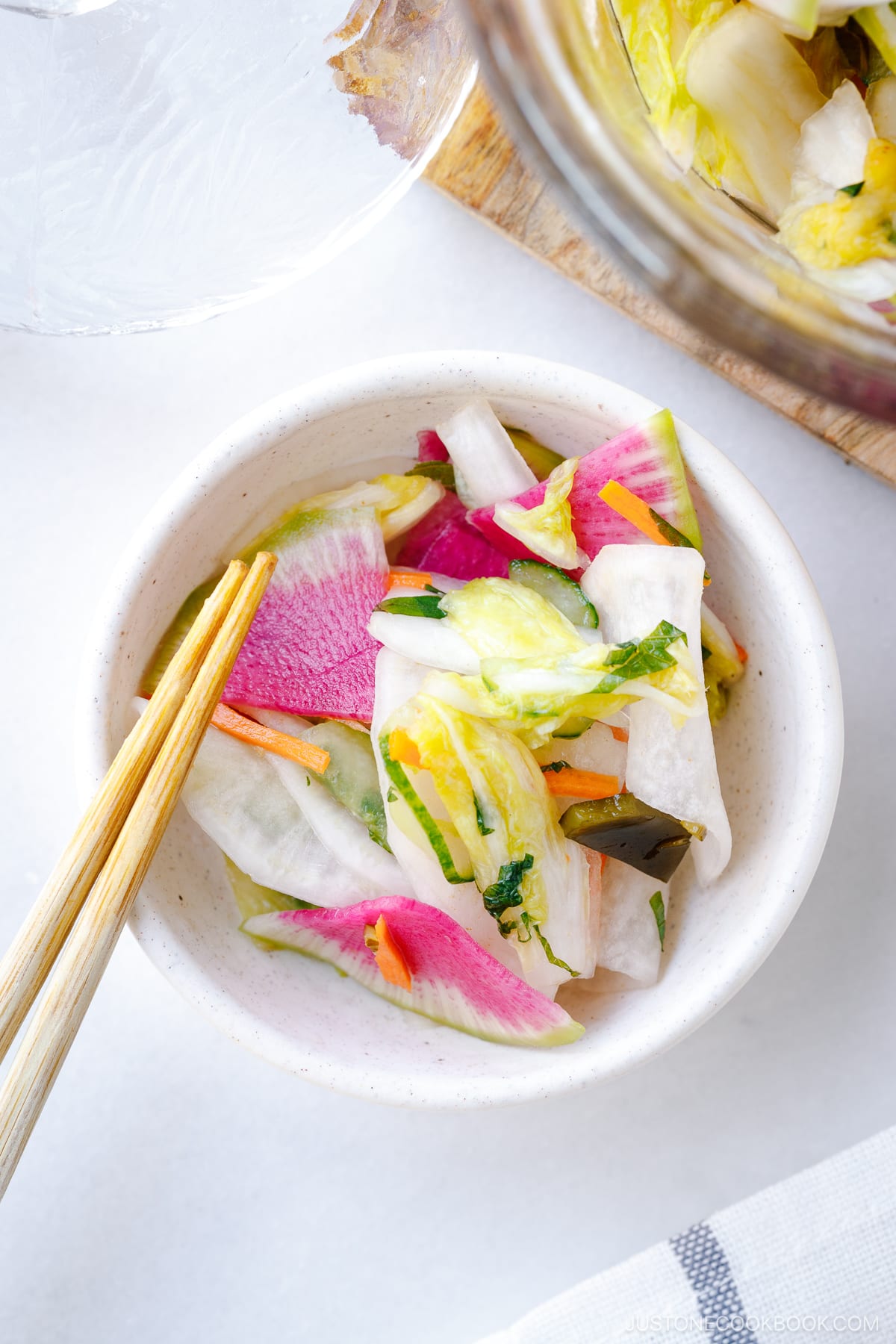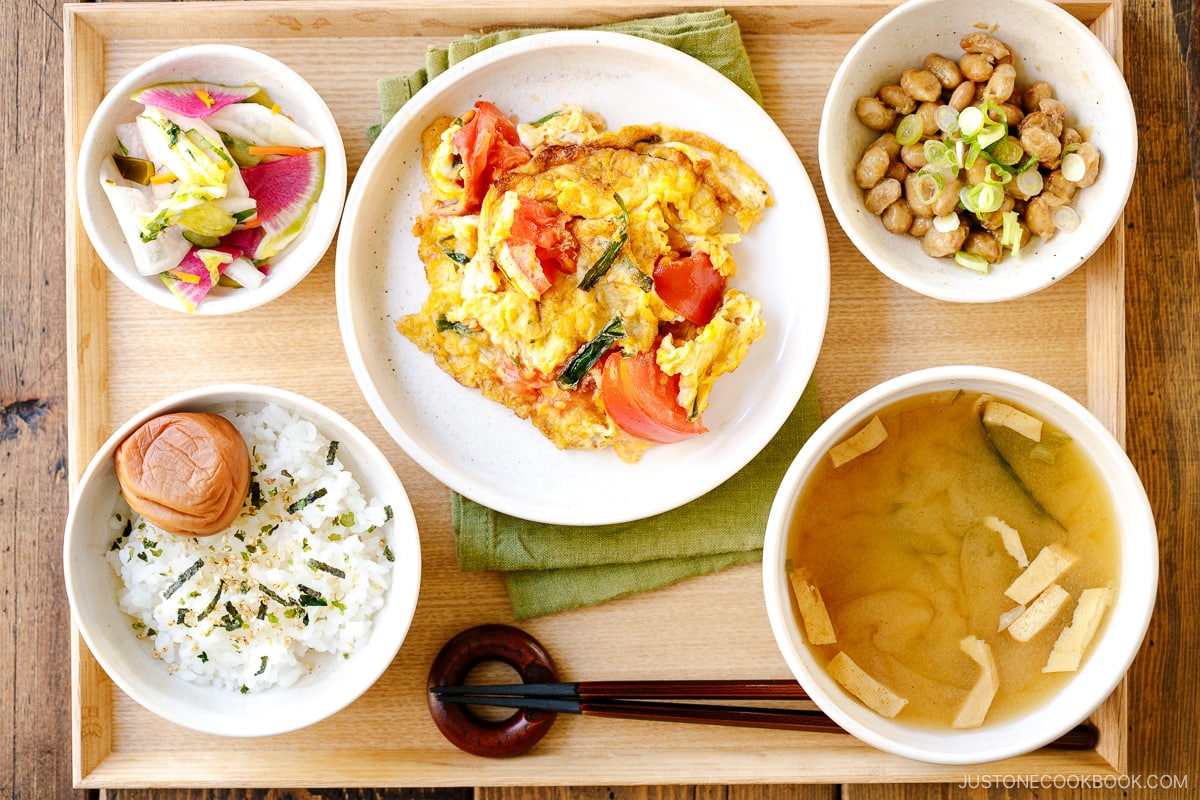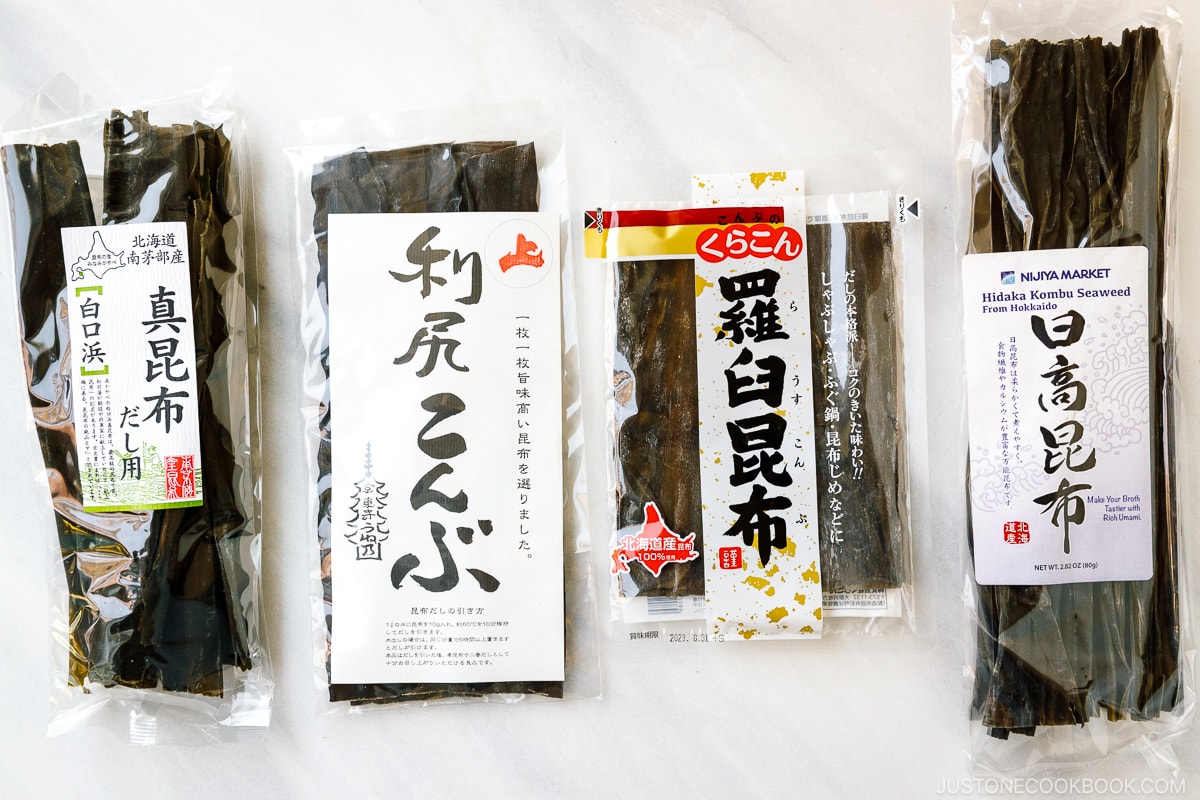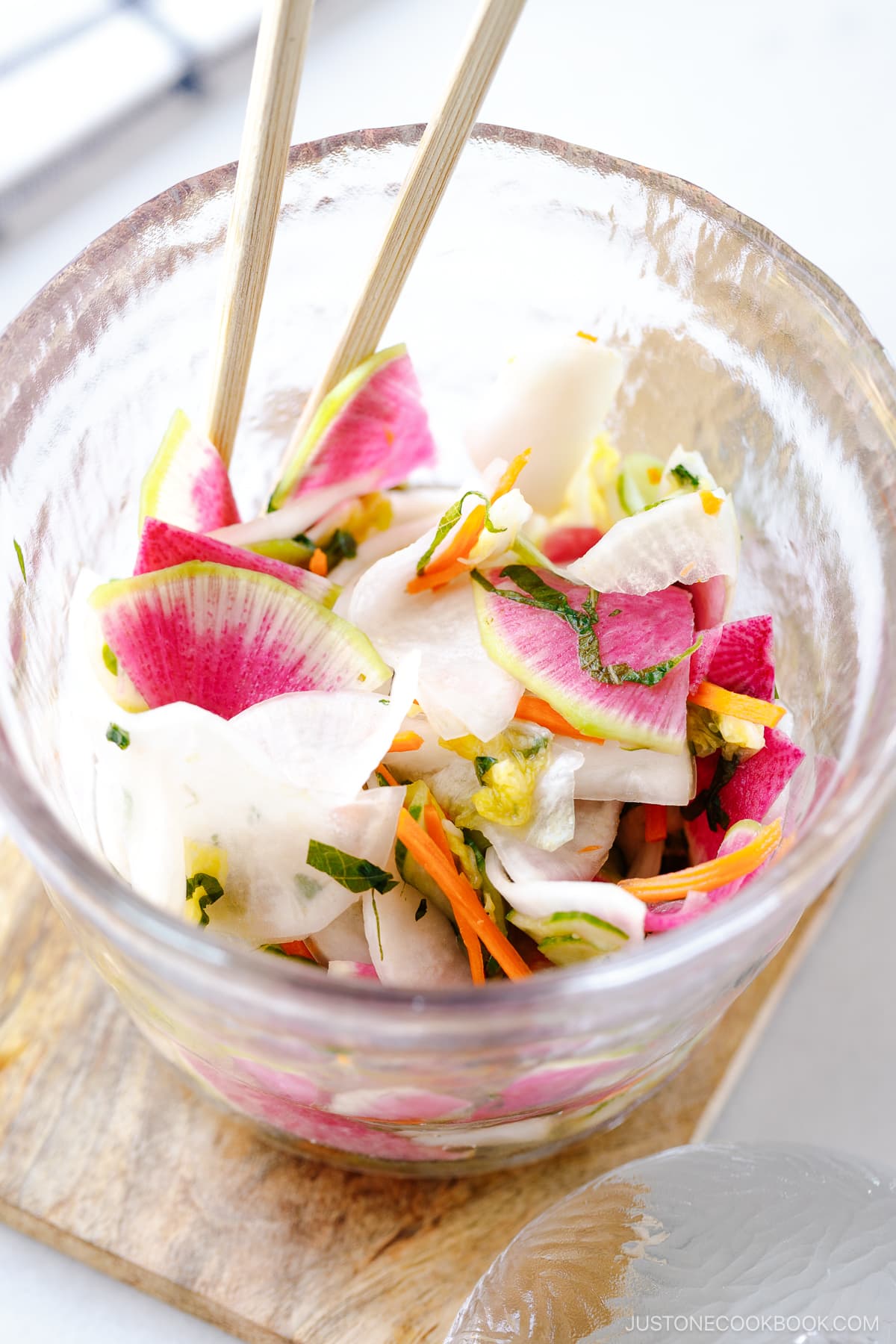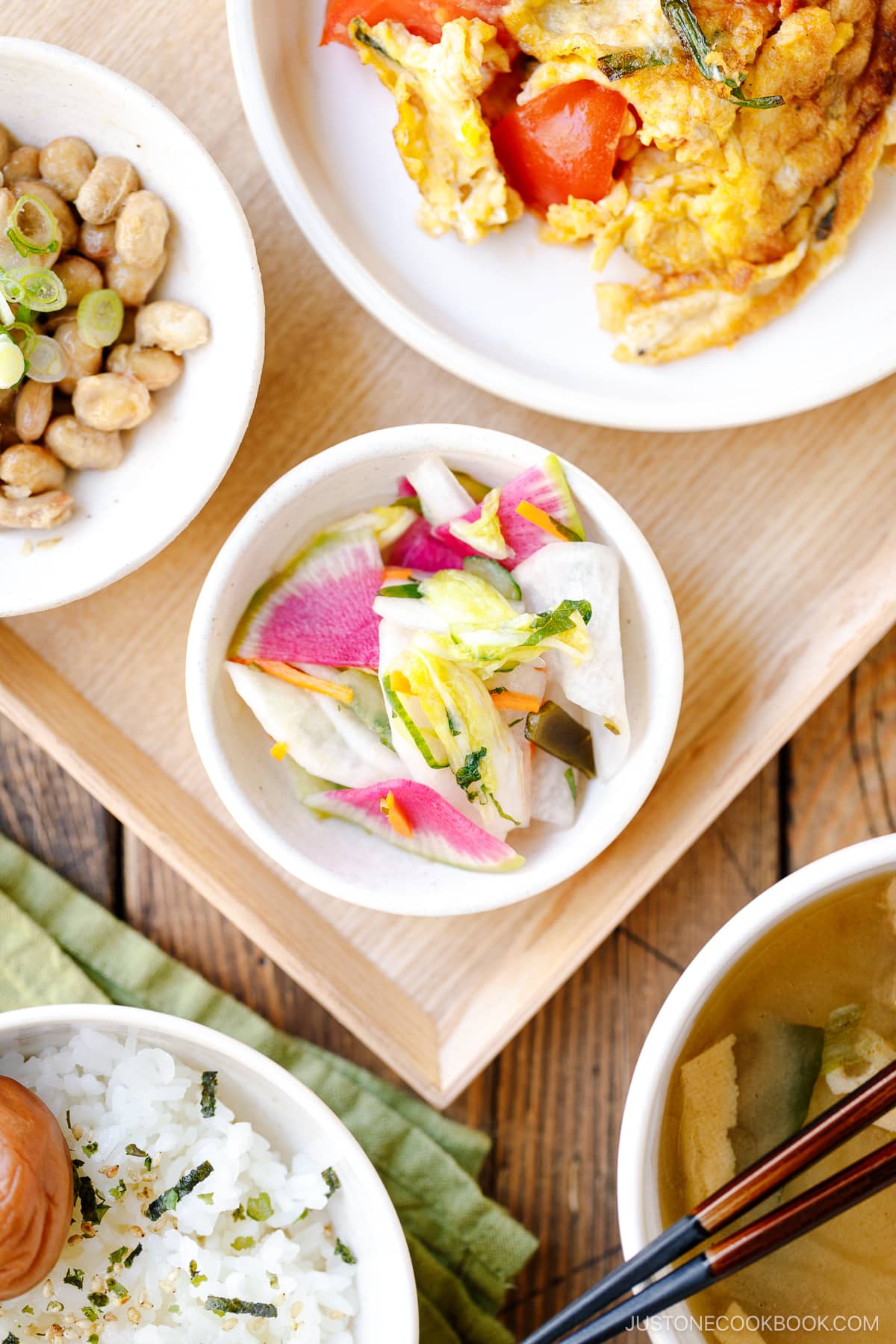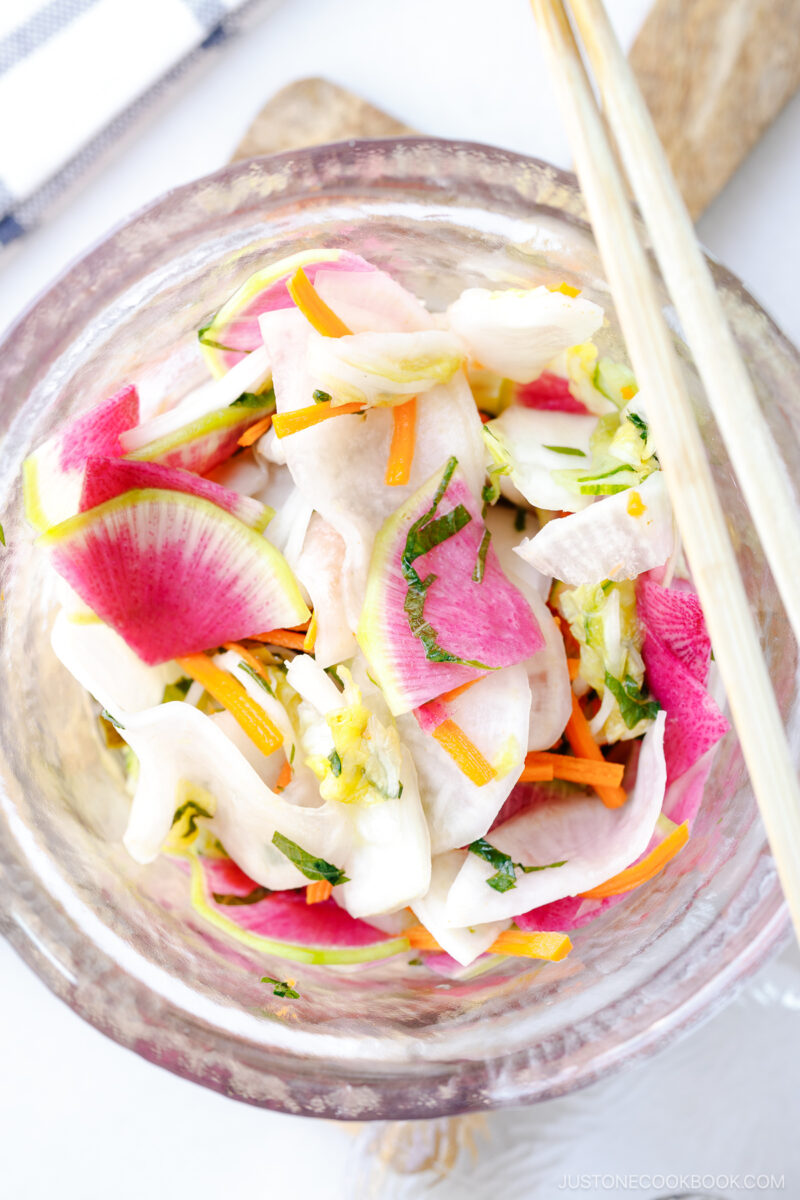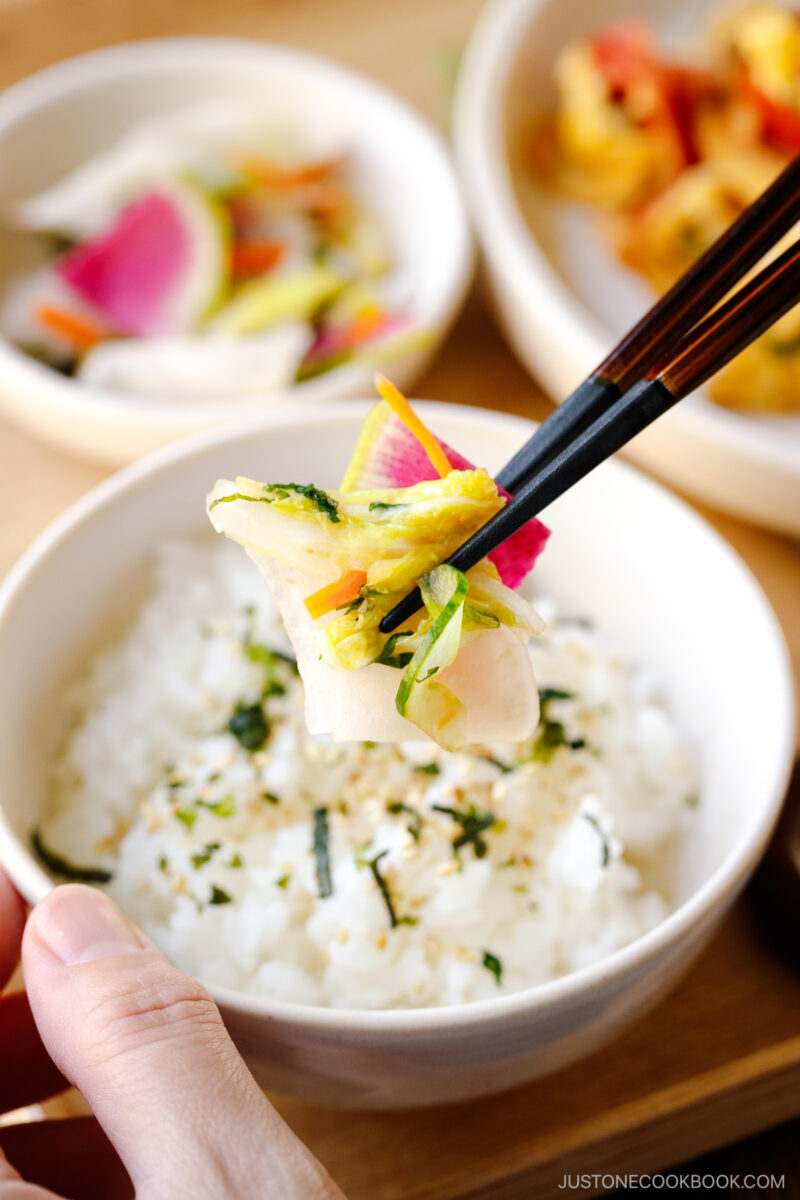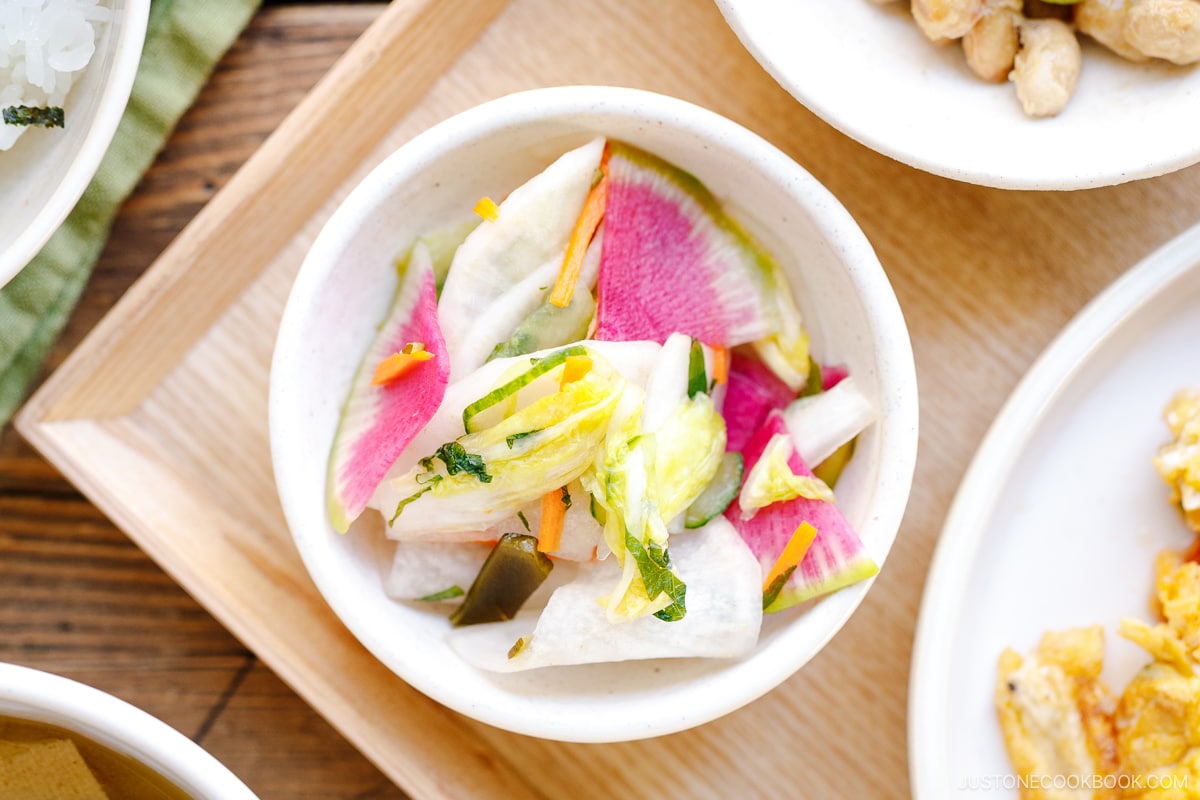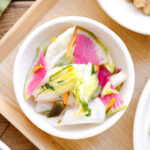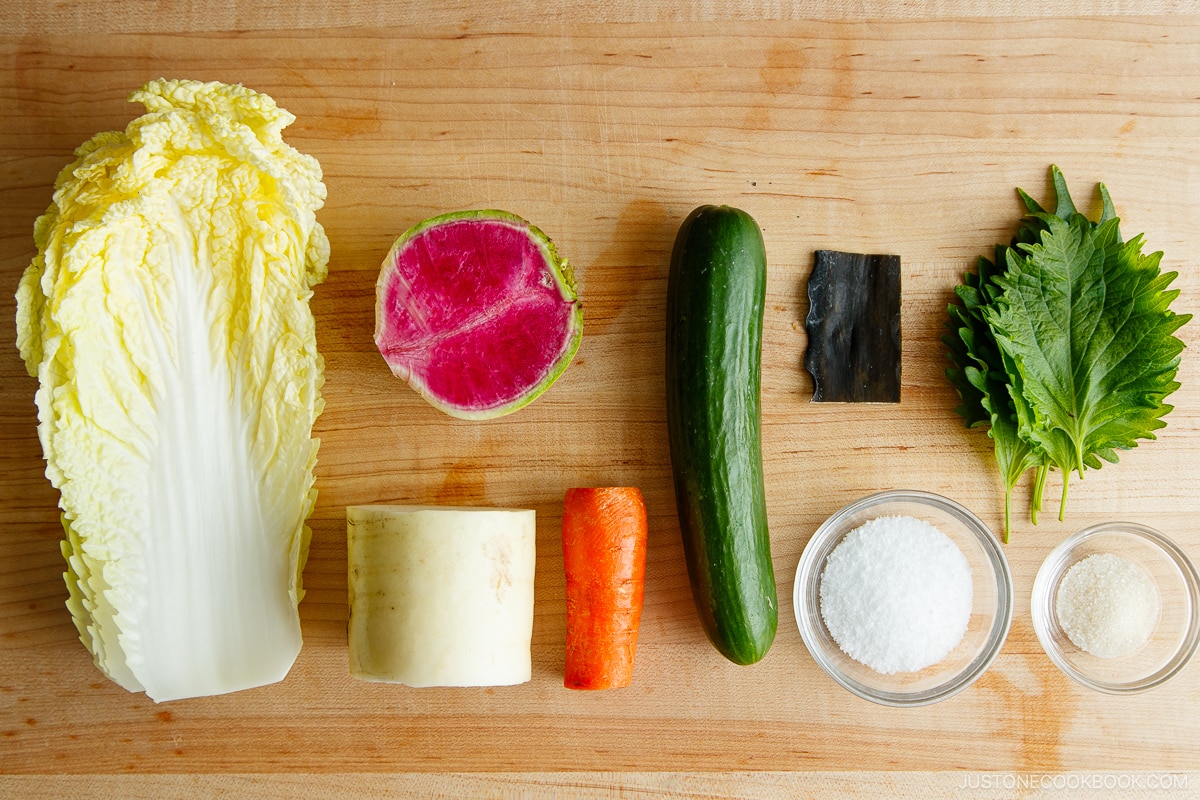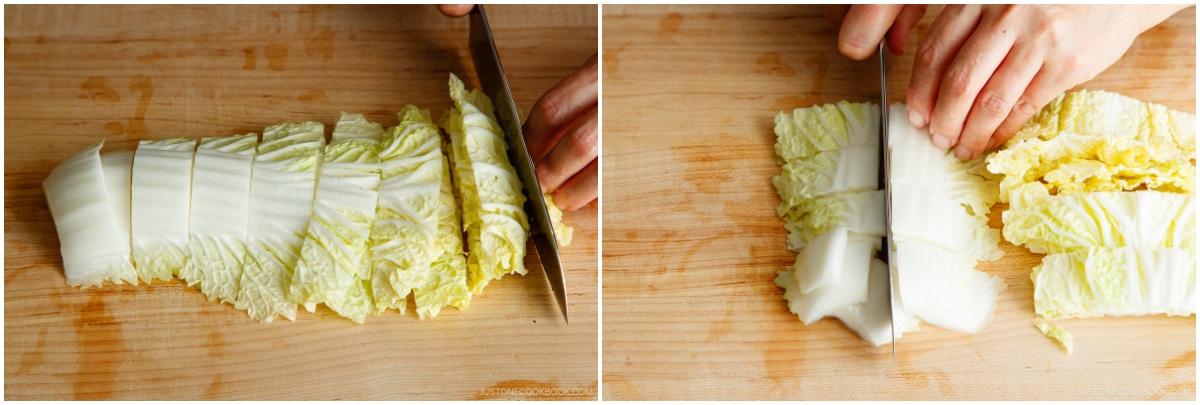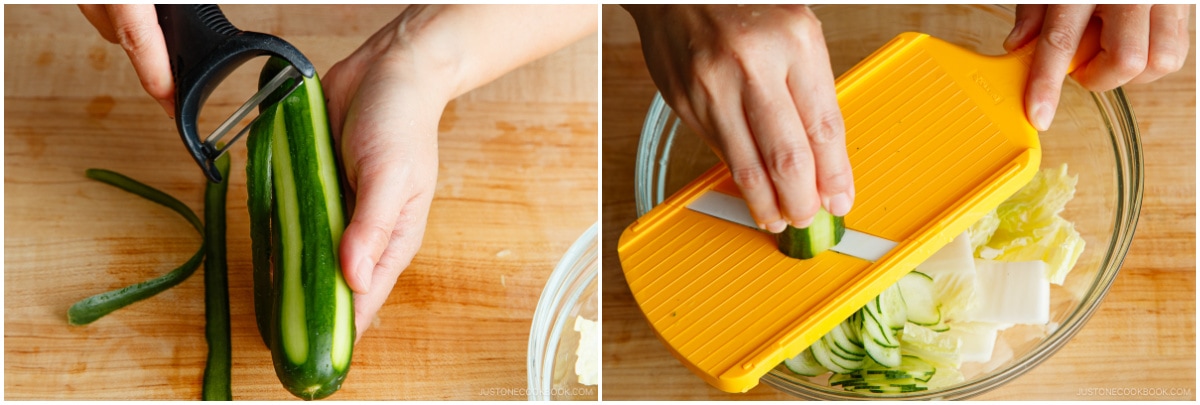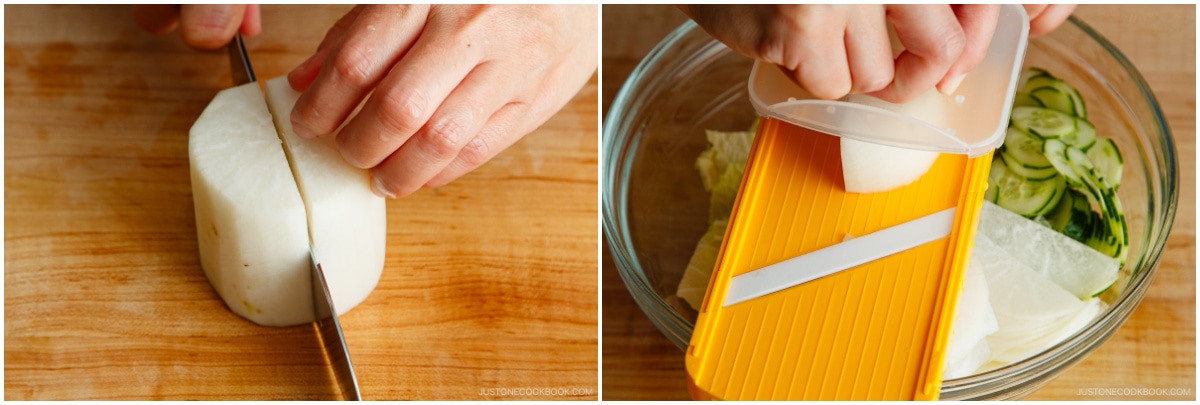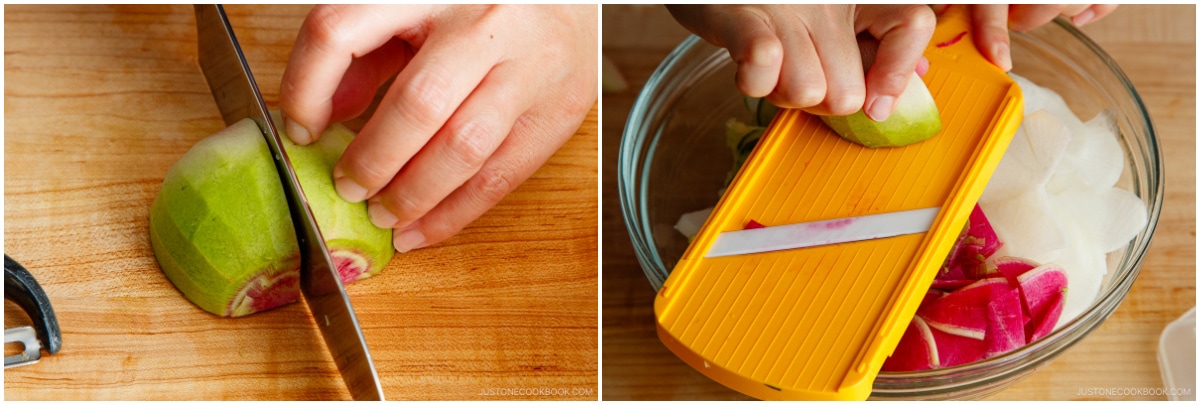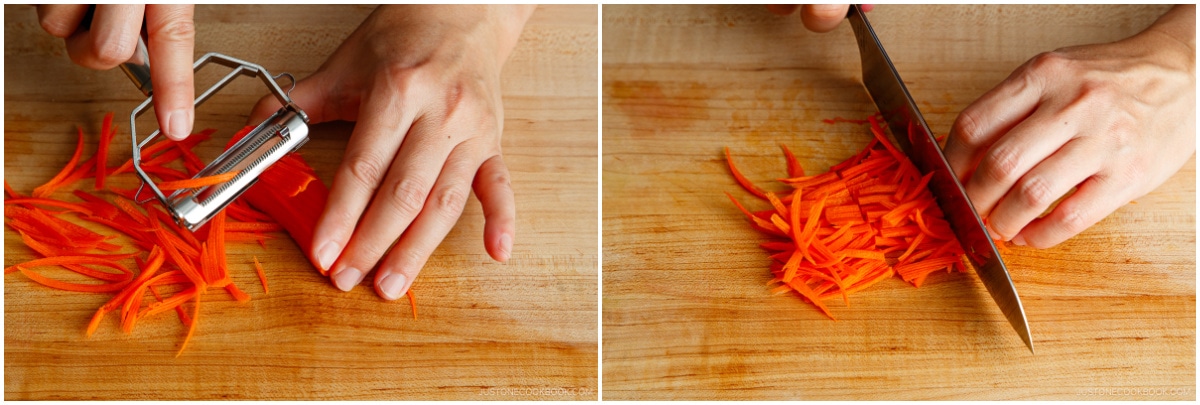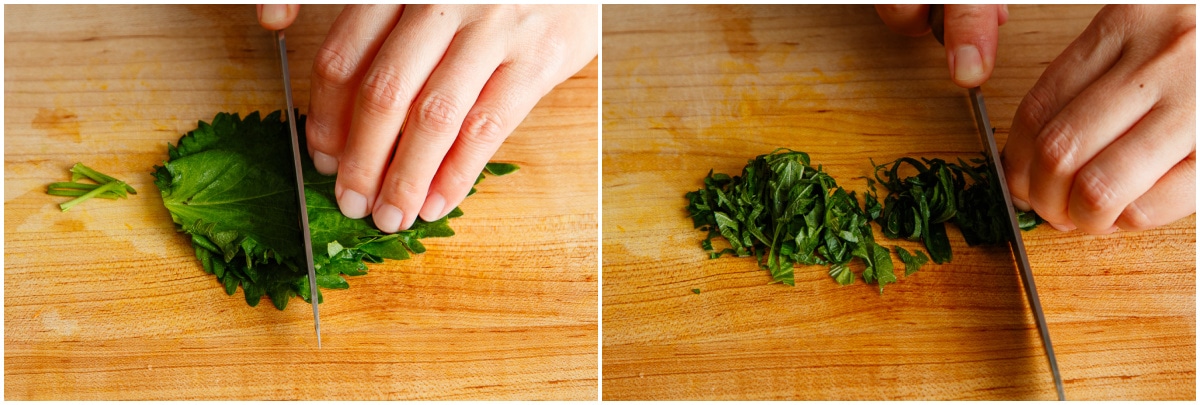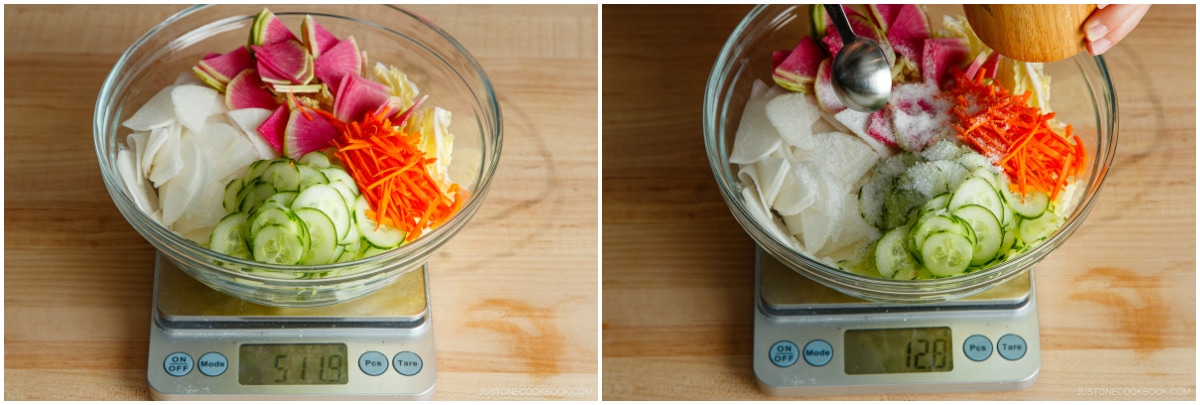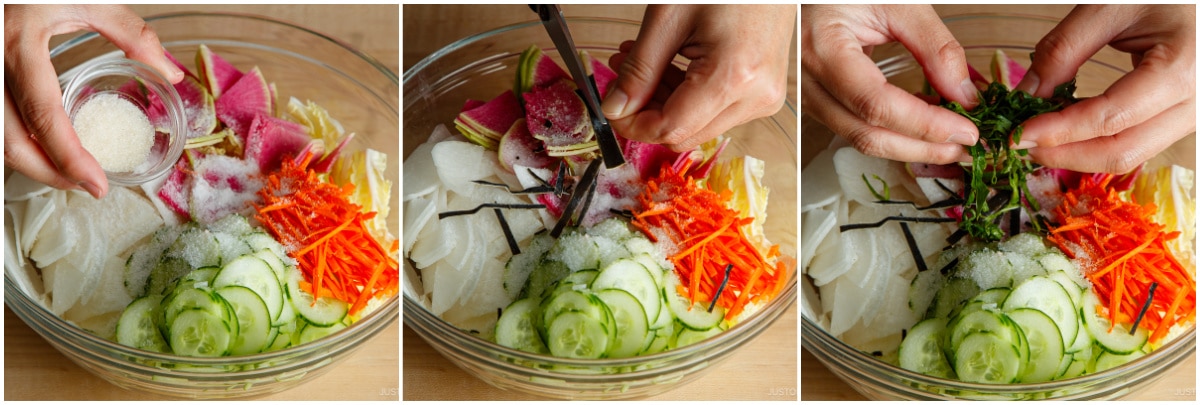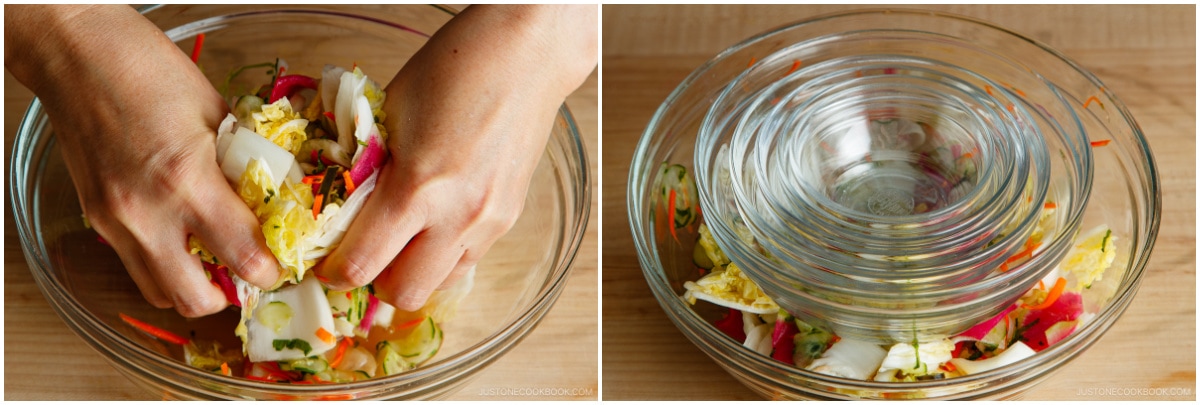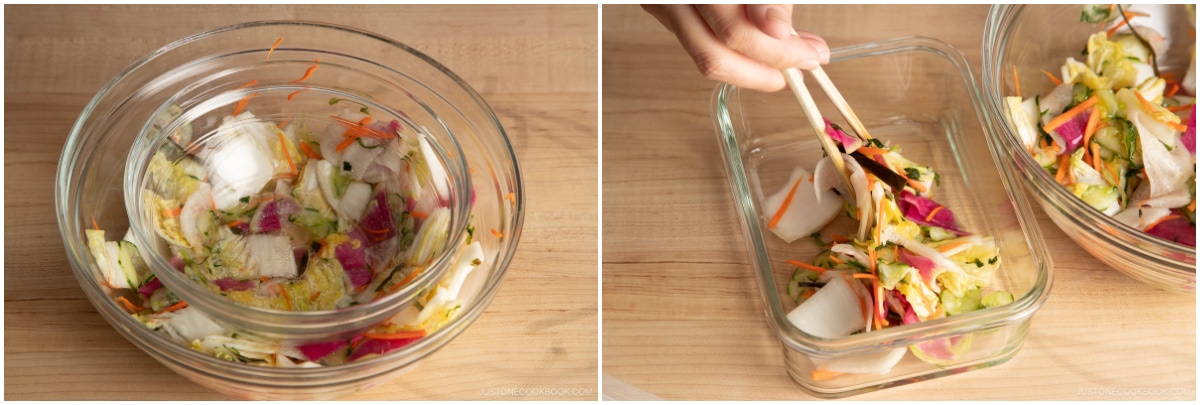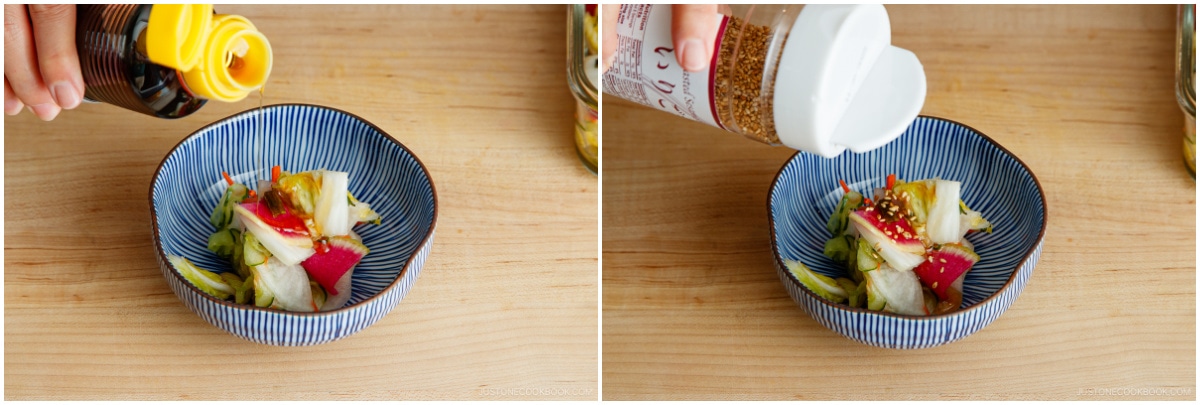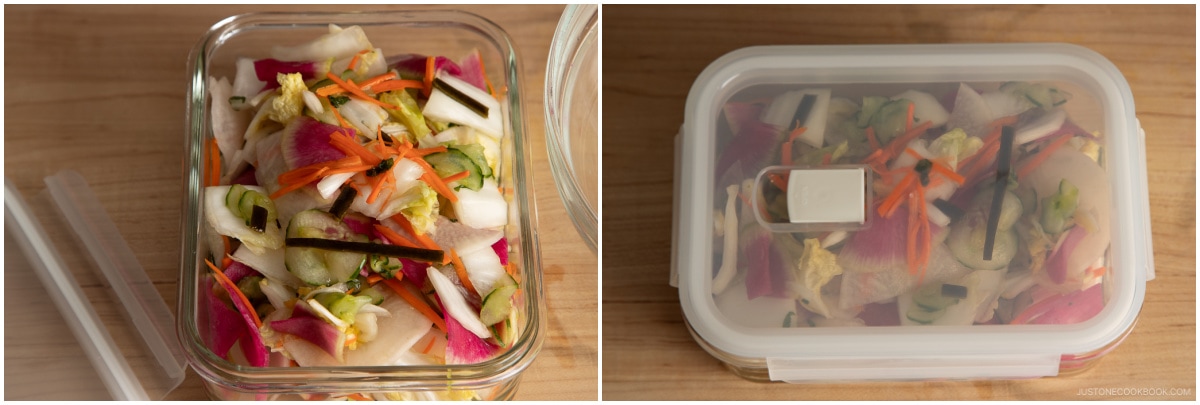I’ve shared many Japanese pickle recipes in the past, but if you ask me which one I make most frequently, I’d pick today’s recipe—Everyday Japanese Pickles. I call them ‘Everyday’ because these pickles never fail to complement and brighten my daily meals. Not only is the flavor light and refreshing, but the snappy texture of the vegetables is pure delight! They also add a splash of color to my Japanese meal (as shown below). This quick and simple homestyle pickle is called asazuke (浅漬け). I usually prepare the pickles first when I’m getting ready for the meal so that we can enjoy them by mealtime.
What is Asazuke?
Japanese pickles, generally known as tsukemono, come in many different styles, and Asazuke (浅漬け) is one of the easiest and quickest to make, where the vegetables are lightly pickled for a very short time. This type of pickle is also called sokusekizuke (即席漬け) or oshinko (お新香). To make these pickles, we cut vegetables into small pieces and either sprinkle them with salt or soak them in pickling liquid. Osmotic pressure causes the vegetables to release liquid and allows the pickling liquid to penetrate them. With asazuke, we gently pickle the vegetables for 1–3 hours (or up to overnight), allowing you to enjoy the natural taste and aroma of fresh vegetables compared to traditional fermented pickles. These days, most Japanese home cooks don’t make tsukemono, which takes days or months. Instead, they make asazuke regularly or purchase store-bought tsukemono to serve as a part of the ichiju sansai meal.
Why You’ll Love This Recipe
So easy and simple to make! A nice addition to complete your meal and a great palate cleanser! A great way to use up odds and ends of vegetables in the refrigerator. A short pickling time of 1–3 hours.
Ingredients for Asazuke
This is how I make my ‘everyday Japanese pickles,’ but feel free to customize the vegetables you use! I encourage you to use up any odds and ends of vegetables left in the fridge. See the recipe card below for the full ingredient list.
Napa cabbage Daikon radish Watermelon radish Japanese or Persian cucumber Carrot Seasonings: salt, sugar, kombu (dried kelp), shiso leaves (optional) For serving: toasted sesame oil, toasted white sesame seeds, yuzu zest (optional)
Another optional ingredient is yuzu zest. Every winter when it’s yuzu season, I get a few yuzu to make yuzu zest. I freeze it to use for miso soup, noodle soup, and my asazuke.
How to Make Everyday Japanese Pickles
Recipe Tips
Here are some of my tips to succeed in making asazuke:
Think about the balance of color and texture of the vegetables. I recommend following the recipe closely at first, then adjusting according to your taste and the seasonal availability of ingredients Use a kitchen scale to measure the amount of salt. That way, there’s no guessing, and you’ll achieve the perfect saltiness every time! I love and highly recommend using my kitchen scale. I use 2.5% salt for the vegetables. To calculate the amount of salt you need, weigh your sliced vegetables and multiply the total vegetable weight by 0.025 (2.5%). Start tasting after 1 hour of pickling. You can compare it after 2 hours and 3 hours to see which you like best. I love the combination of shiso leaves, sesame oil, and yuzu zest in this pickle. I hope you can try this tasty combo! So delicious. I never get tired of making this asazuke.
How to Store Japanese Pickles
To Store: As the vegetables continue to pickle and become saltier, discard any liquid. Keep the pickles in an airtight container and store in the refrigerator for up to 3-4 days. To Serve: Use clean utensils to take out the portions you need and promptly place the container back to the refrigerator.
Can I pickle for a longer time? Remember that the longer the pickling time, the more the flavor will soak into the vegetables. Also, the saltier the pickling solution, the quicker the pickling process. Using a heavier object will speed up the pickling. So, it’s all about controlling the pickle solution, timing, and weight. If you follow my recipe below, try tasting a piece of vegetable to determine when to stop pickling to achieve the desired flavor. Can I use other vegetables? Absolutely! I often make changes based on seasonal availability. Keep in mind that denser vegetables take longer to pickle, and some vegetables release more water than others. Experiment to find the combination that works best for you. Give green cabbage, red radishes, turnips, celery, and cauliflower a try! Can I keep asazuke longer than 3-4 days? Unfortunately, no. Asazuke pickles don’t last long for two main reasons: 1) they use raw vegetables, which are cut into small pieces and have a large surface area exposed to air, and 2) they have a lower salt concentration (typically 2-3%) than more traditional fermented pickles, making it easier for bacteria to grow.
What to Serve with Japanese Pickles
Lightly salted pickles stimulate the appetite and go well with white rice, the staple food of the Japanese diet! They pair perfectly with any Japanese or Asian-style meals. Here are some dishes you can serve with the pickles to create a complete meal.
Rice: Japanese White Rice (made on the stove), Brown Rice, Onigiri (Japanese Rice Balls) Soup: Daikon and Fried Tofu Miso Soup Main: Teriyaki Salmon, Garlic Miso Chicken Wings, Mapo Eggplant Sides: Stir-Fried Tomato and Eggs, Simmered Kabocha, Chrysanthemum Greens Salad
Wish to learn more about Japanese cooking? Sign up for our free newsletter to receive cooking tips & recipe updates! And stay in touch with me on Facebook, Pinterest, YouTube, and Instagram.
